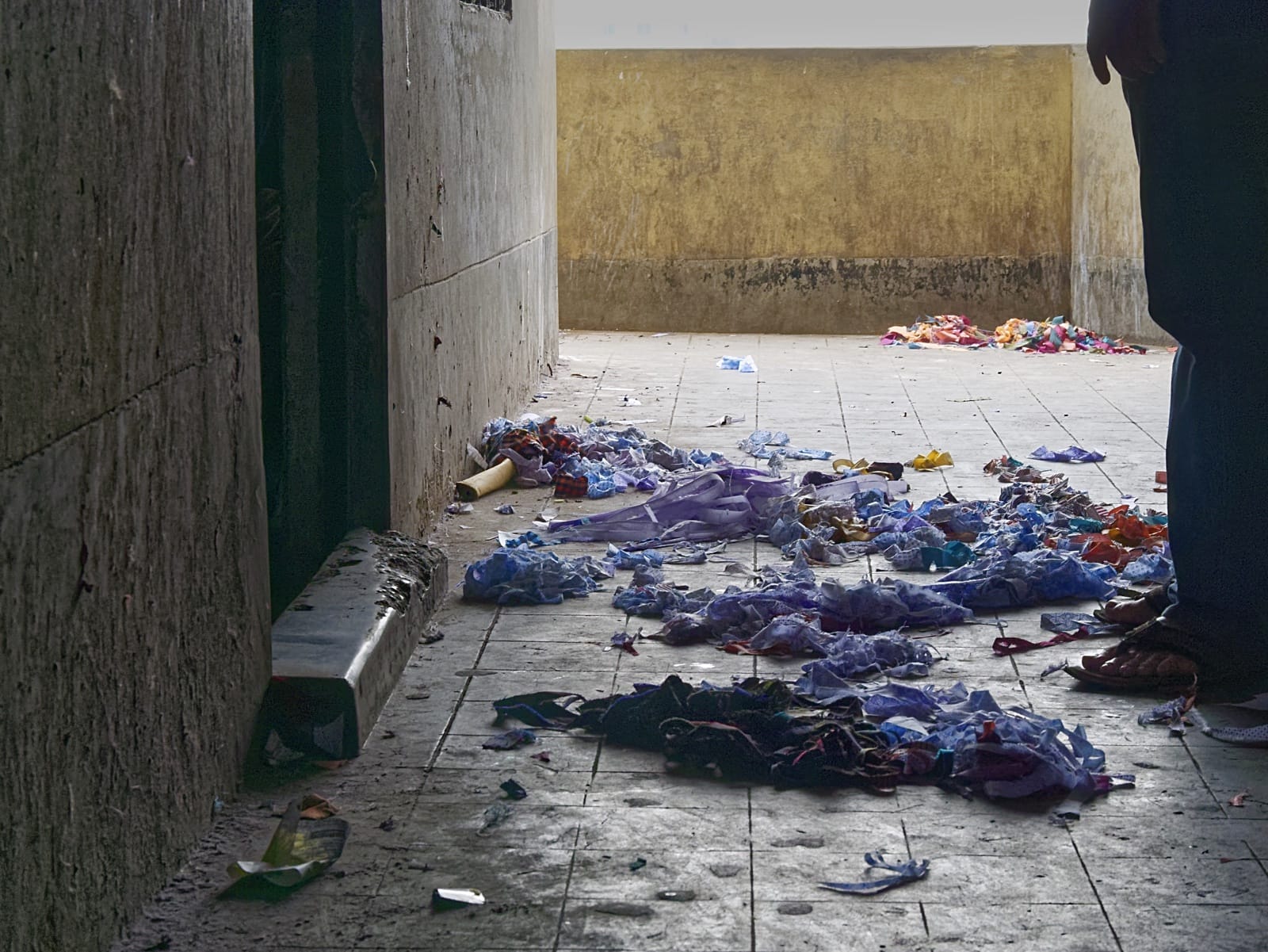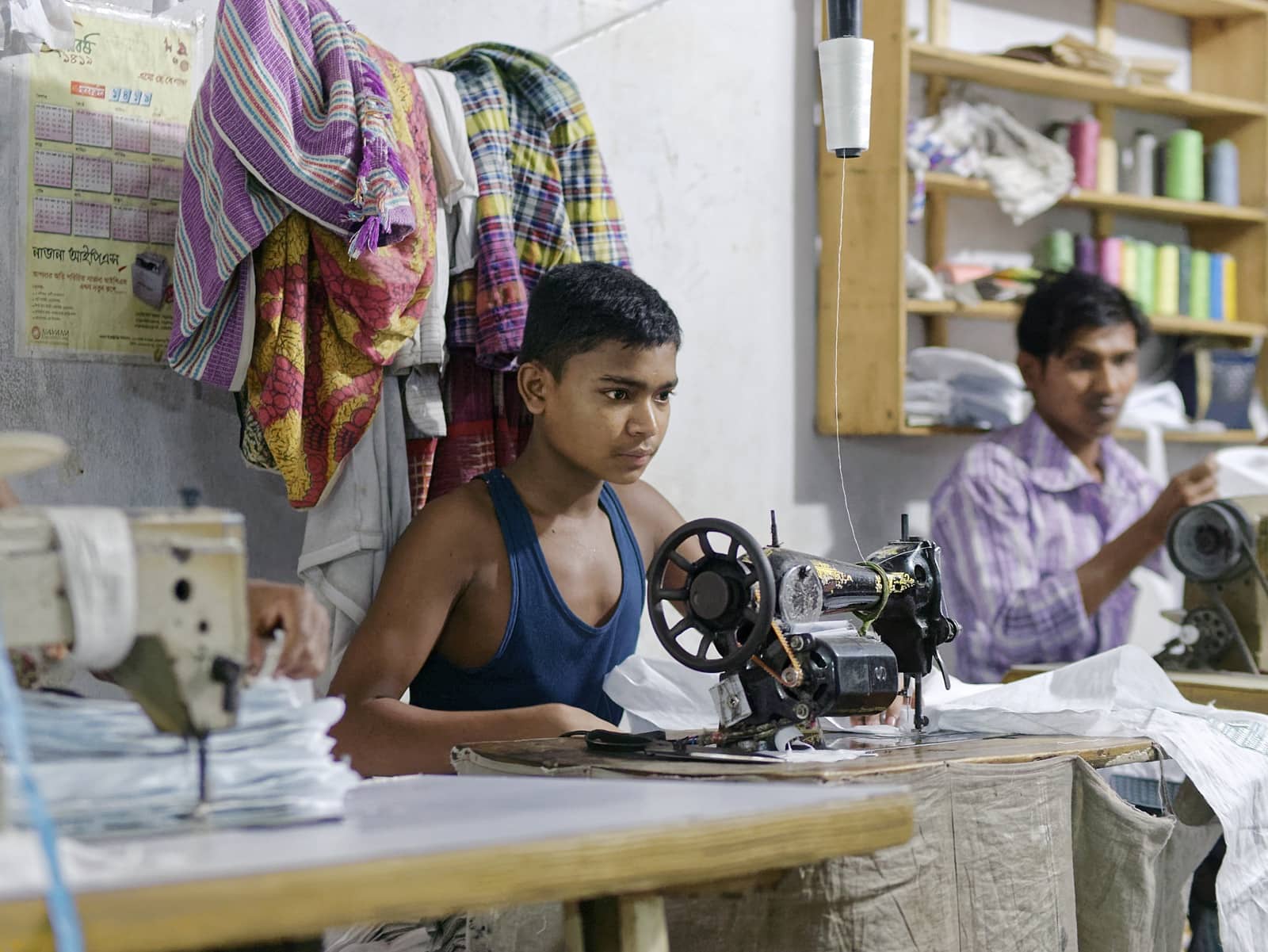The borderlands between fashion and human rights is often difficult terrain to navigate, filled with cultural and intellectual challenges and, sometimes, with moral contradictions as well.
It's this ground which Sarah Labowitz relentlessly explored during her tenure as co-director of the NYU Stern Center for Business and Human Rights—the first such effort housed within a business school.
Formerly a policy advisor at the U.S. Department of State, Sarah is a graduate of Grinnell College and the Fletcher School at Tufts, a fellow of the Truman National Security Project, and a term member of the Council on Foreign Relations. In the aftermath of 2013’s Rana Plaza factory disaster, Sarah and her team at NYU Stern examined the relationship between mass-market fashion and human rights, closely researching supply chain practices of the apparel manufacturing industry.
As she steps away from her role at the Center, Sarah talks about what she learned during her time there—and what she thinks might improve the social impact of brands.

Why did you want to create a human rights center inside a business school?
The center grew out of having done human rights work with Mike [Posner], who's really one of the lions of the human rights field. I think we both recognized that business has an outsized role to play when it comes to how people experience rights and we saw a gap in the 'business and human rights" landscape. You know—how do you get companies to actually change their behavior so that it results in better realization of human rights?
We started the center because we wanted a platform to do that. It combines real, on-the-ground research and then translates that into prescriptions for what to do about it and how to make business practices better. It started with the apparel industry and, really, commodity production of cheap clothes. "How do you produce lots of cheap clothes?" is different question than the artisanal kind of production that you guys focus on—but it’s a huge driver of employment, particularly in developing countries. We also looked at recruitment of migrant construction workers and how investors measure social factors as part of sustainable investing strategy.
The Rana Plaza tragedy spurred several reform efforts in Bangladesh. Have they been effective?
It's a mixed bag. On the one hand, they were a badly needed response to the lack of coordinated standards and the urgency of fixing factories in Bangladesh. The Accord and the Alliance both tout their overall safety fixes as a sign of success - that's the number of violations fixed, rather than the number of factories, which remains quite small. So they've had some success in the relatively narrow universe of 2,000 factories (out of 7,000 overall) that the foreign buyers acknowledge. But it's also exacerbated a two-tier factory system, where factories that do direct export continue to be the targets of requirements, inspections, etc., while little attention is paid to the workers in the subcontracted factories that support the direct exporters.
I was pretty surprised to see that in the renewal of the Accord, the factory owners were once again excluded from the negotiation. The Accord faced significant political obstacles in its first iteration because it exacerbated a power dynamic in which the brands hold most of the cards, at the same time that the costs of implementing the Accord were borne by the factory owners. I don't know how they're going to manage the legitimacy issues going forward, especially if they want the Accord to be a model in other places.

You said business has an outsized role to play in human rights. Why?
Part of this is that companies are really big and really global in terms of where they make products and where they sell products. Part of it is that supply chains have become much more integrated and distributed over the last 30 years. And part of it is that the international liberal order is premised on nation-states being the primary enforcers of rights. Which is, of course, still true, but when all the post–World War II frameworks were being authored, companies were not as big, global, or integrated as they are today.
One of the threads that comes through all of the research is that companies consistently try and set the rules. We did a huge amount of data analysis looking at the indicators that investors use to evaluate companies and it was so striking how deferential we all are to the companies themselves in terms of how they’re evaluated. They get to decide what are the salient aspects of their evaluation as opposed to setting a common standard that all companies in the same sector abide by. If all you're doing is looking at a company's self-report on sustainability, then that paradigm rewards companies that are good at communications, right?
As consumers have demanded more sustainability, companies have gotten savvier about how to deliver the appearance of sustainability: “Cosmetic compliance”. Especially in things like apparel and consumer goods, companies have gotten very good at telling stories that seem appealing—but that aren't supported by any rigorous standards. And so I think, in some ways, it's become harder to be an ethical consumer.
What might make it easier?
I think there should be some consumer-facing tool that would allow you to compare how people are treated in the production of products and to say something like "H&M is better than The Gap" so you could factor that into the suite of things you consider when buying something like a shirt.
You know it's interesting: I just moved to Houston and, since I moved from New York, I brought almost no furniture. I have no sheets, no towels... nothing. So I go to The Sweethome which is the New York Times consumer product review site. And it's great! I'm like "OK—I need to buy sheets" and they've tested all the sheets and come up with a set of criteria to tell you that the L.L. Bean sheets are the ones that most people should buy.
I want that for clothes—but clothes are harder. In some ways, sheets are interchangeable. With clothes, it's like "Does it fit? Is it my style? Can I afford it? Can I get to the store to try it on?”. There's so many different factors that we consider when buying something like clothes. But right now, even if you wanted to consider how people are treated in the production of clothes, it would be very, very difficult for you to make that judgement.
A former colleague of mine from Stern, Scott Galloway, is looking at ranking how well consumer brands engage with their customers. What he's told me is that some of these brands now incorporate his ranking into their brand managers' performance evaluations. And, you know, being inside a business school also has given me insight into how motivating those kinds of rankings are. You know all college and universities jump through a lot of hoops to move up the ranks.

So a good ranking standard might harness the competitive nature of business to improve their production practices?
I think that's at least a hypothesis worth testing. We're at the point now where we've sort of played out the model where you wag your finger at the "bad factory" and you shame them and threaten to cut business and you squeeze them in all respects. All the evidence suggests that it's not working all that well. A lot of what is done in the apparel world is really about evaluating the factory, not evaluating the company.
I guess I'm hungry to identify—What are the differences among these companies? What distinguishes one from the other? And so I think that there is a moment to shift the paradigm to "What's the company doing?" and asking how each company differs from the other in how they manage suppliers and their own workforce?
It cannot be that ethically-produced stuff is reserved just for high-end shoppers who live in urban centers. Human rights cannot be a luxury good. You should be able to go to Target and buy leggings for your kids that they're going to outgrow in 6 months and have confidence that it's not someone else's kids making those leggings.
And the economic position for workers would also be improved by this?
I think so, but I must say—I think we have to challenge some of the assumptions about development. The premise of low wage, low skill manufacturing is that you move up the value chain. And what you see in Bangladesh and Cambodia is that they make the same stuff now that they did 30 years ago. They're not really moving up the manufacturing value chain. So I think that we have to reckon with that as a premise.
I've met women who've been in the industry for 20 years and they can't sew a shirt! They sew the same seam, over and over again. The benefit of artisanal production is that, often times, those people have a craft and are able to produce a completed garment or do tailoring. With commodity fast fashion that's just not the case.
And so the question is: Can artisan-style production drive employment at the same scale that low wage manufacturing has? In some ways, I think that consumer demand shows a reaction to fast fashion commodity fashion. People want stuff that's unique, that's handmade, that has a story behind it. It's artisanal plus customization: The stories you read about Nike or Adidas 3D printing a shoe that's customized for you.... is that going to be every shoe in your closet? No, it's probably going to be a one time thing for most people—but that does seem like a growing part of the market.
So more options for consumers and new competitive incentives for businesses makes for a better human rights conversation?
Yeah. Or at least have a different conversation than the one we've been having for 20 years. Potentially more contentious, more interesting, and maybe more meaningful.
This interview has been condensed and edited for clarity.






